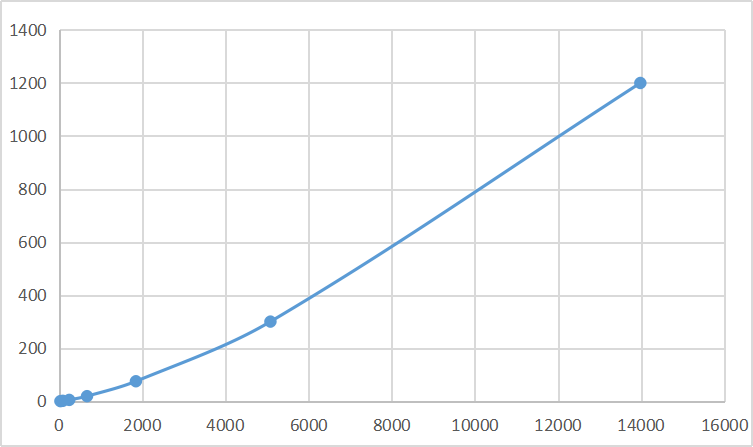Packages (Simulation)

Reagent Preparation

Image (I)
Image (II)
Certificate


Multiplex Assay Kit for Apolipoprotein B100 (APOB100) ,etc. by FLIA (Flow Luminescence Immunoassay)
Apo-B100
(Note: Up to 8-plex in one testing reaction)
- Product No.LMA603Bo
- Organism SpeciesBos taurus; Bovine (Cattle) Same name, Different species.
- Sample TypeSerum, plasma and other biological fluids
- Test MethodDouble-antibody Sandwich
- Assay Length3.5h
- Detection Range1.17-1200ng/mL
- SensitivityThe minimum detectable dose of this kit is typically less than 0.39 ng/mL.
- DownloadInstruction Manual
- UOM 8Plex 7Plex 6Plex 5Plex 4Plex 3Plex 2Plex1Plex
- FOB
US$ 472
US$ 490
US$ 517
US$ 553
US$ 590
US$ 644
US$ 726
US$ 907
Add to Price Calculator
Result
For more details, please contact local distributors!
Specificity
This assay has high sensitivity and excellent specificity for detection of Apolipoprotein B100 (APOB100) ,etc. by FLIA (Flow Luminescence Immunoassay).
No significant cross-reactivity or interference between Apolipoprotein B100 (APOB100) ,etc. by FLIA (Flow Luminescence Immunoassay) and analogues was observed.
Recovery
Matrices listed below were spiked with certain level of recombinant Apolipoprotein B100 (APOB100) ,etc. by FLIA (Flow Luminescence Immunoassay) and the recovery rates were calculated by comparing the measured value to the expected amount of Apolipoprotein B100 (APOB100) ,etc. by FLIA (Flow Luminescence Immunoassay) in samples.
| Matrix | Recovery range (%) | Average(%) |
| serum(n=5) | 86-103 | 99 |
| EDTA plasma(n=5) | 98-105 | 101 |
| heparin plasma(n=5) | 81-96 | 89 |
Precision
Intra-assay Precision (Precision within an assay): 3 samples with low, middle and high level Apolipoprotein B100 (APOB100) ,etc. by FLIA (Flow Luminescence Immunoassay) were tested 20 times on one plate, respectively.
Inter-assay Precision (Precision between assays): 3 samples with low, middle and high level Apolipoprotein B100 (APOB100) ,etc. by FLIA (Flow Luminescence Immunoassay) were tested on 3 different plates, 8 replicates in each plate.
CV(%) = SD/meanX100
Intra-Assay: CV<10%
Inter-Assay: CV<12%
Linearity
The linearity of the kit was assayed by testing samples spiked with appropriate concentration of Apolipoprotein B100 (APOB100) ,etc. by FLIA (Flow Luminescence Immunoassay) and their serial dilutions. The results were demonstrated by the percentage of calculated concentration to the expected.
| Sample | 1:2 | 1:4 | 1:8 | 1:16 |
| serum(n=5) | 97-105% | 78-95% | 92-105% | 79-94% |
| EDTA plasma(n=5) | 78-96% | 90-97% | 93-105% | 80-101% |
| heparin plasma(n=5) | 86-101% | 82-97% | 88-97% | 79-97% |
Stability
The stability of kit is determined by the loss rate of activity. The loss rate of this kit is less than 5% within the expiration date under appropriate storage condition.
To minimize extra influence on the performance, operation procedures and lab conditions, especially room temperature, air humidity, incubator temperature should be strictly controlled. It is also strongly suggested that the whole assay is performed by the same operator from the beginning to the end.
Reagents and materials provided
| Reagents | Quantity | Reagents | Quantity |
| 96-well plate | 1 | Plate sealer for 96 wells | 4 |
| Pre-Mixed Standard | 2 | Standard Diluent | 1×20mL |
| Pre-Mixed Magnetic beads (22#:APOB100) | 1 | Analysis buffer | 1×20mL |
| Pre-Mixed Detection Reagent A | 1×120μL | Assay Diluent A | 1×12mL |
| Detection Reagent B (PE-SA) | 1×120μL | Assay Diluent B | 1×12mL |
| Sheath Fluid | 1×10mL | Wash Buffer (30 × concentrate) | 1×20mL |
| Instruction manual | 1 |
Assay procedure summary
1. Preparation of standards, reagents and samples before the experiment;
2. Add 100μL standard or sample to each well,
add 10μL magnetic beads, and incubate 90min at 37°C on shaker;
3. Remove liquid on magnetic frame, add 100μL prepared Detection Reagent A. Incubate 60min at 37°C on shaker;
4. Wash plate on magnetic frame for three times;
5. Add 100μL prepared Detection Reagent B, and incubate 30 min at 37°C on shaker;
6. Wash plate on magnetic frame for three times;
7. Add 100μL sheath solution, swirl for 2 minutes, read on the machine.
GIVEAWAYS
INCREMENT SERVICES
| Magazine | Citations |
| PLoS One | Enhancement of Naringenin Bioavailability by Complexation with Hydroxypropoyl-β-Cyclodextrin Plosone: 0018033 |
| Autonomic Neuroscience | Chemical sympathectomy induces arterial accumulation of native and oxidized LDL in hypercholesterolemic rats ScienceDirect: S1566070211004152 |
| Toxicology | iTRAQ-based proteomic profiling of human serum reveals down-regulation of platelet basic protein and apolipoprotein B100 in patients with hematotoxicity induced by chronic occupational benzene exposure ScienceDirect: S0300483X11004628 |
| Atherosclerosis | Up-reCavia (Guinea pig )lation of Hnf1α gene expression in the liver of rats with experimentally induced chronic renal failure – A possible link between circulating PCSK9 and triacylglycerol concentrations Pubmed:26978583 |
| Proteomics Clinical Applications | Comparative mass spectrometric and immunoassay‐based proteome analysis in serum of Duchenne muscular dystrophy patients Pubmed:26680509 |
| molecular nutrition & food research | Alleviating VLDL overproduction is an important mechanism for Laminaria japonica polysaccharide to inhibit atherosclerosis in LDLr-/- mice with diet-induced insulin resistance. pubmed:27928899 |
| PROTEOMICS - Clinical Applications | Comparative mass spectrometric and immunoassay-based proteome analysis in serum ofDuchenne muscular dystrophy patients. pubmed:26680509 |
| Biosci Biotechnol Biochem. | Choline and betaine ameliorate liver lipid accumulation induced by vitamin B6 deficiency in rats. pubmed:27696964 |
| Journal of Nutritional Science and Vitaminology | Accumulation of Liver Lipids Induced by Vitamin B6 Deficiency Was Effectively Ameliorated by Choline and, to a Lesser Extent, Betaine Pubmed: 30814419 |
| ECOTOXICOLOGY AND ENVIRONMENTAL SAFETY | Zygophyllum album saponins prevent atherogenic effect induced by deltamethrin via attenuating arterial accumulation of native and oxidized LDL in rats Pubmed: 32105945 |
| Ecotoxicol Environ Saf | Permethrin induced arterial retention of native and oxidized LDL in rats by promoting inflammation, oxidative stress and affecting LDL receptors, and collagen … Pubmed: 32911180 |
| Nat Commun | GP73 is a TBC-domain Rab GTPase-activating protein contributing to the pathogenesis of non-alcoholic fatty liver disease without obesity 34853313 |
| Clinical Nutrition | Postprandial dyslipidemia after a standardized high-fat meal in BMI-matched healthy individuals, and in subjects with prediabetes or Type 2 diabetes 34656950 |
| Nano Research | Immunomodulatory hybrid bio-nanovesicle for self-promoted photodynamic therapy |
| Catalog No. | Related products for research use of Bos taurus; Bovine (Cattle) Organism species | Applications (RESEARCH USE ONLY!) |
| RPA603Bo01 | Recombinant Apolipoprotein B100 (APOB100) | Positive Control; Immunogen; SDS-PAGE; WB. |
| PAA603Bo01 | Polyclonal Antibody to Apolipoprotein B100 (APOB100) | WB; IHC; ICC; IP. |
| SEA603Bo | ELISA Kit for Apolipoprotein B100 (APOB100) | Enzyme-linked immunosorbent assay for Antigen Detection. |
| LMA603Bo | Multiplex Assay Kit for Apolipoprotein B100 (APOB100) ,etc. by FLIA (Flow Luminescence Immunoassay) | FLIA Kit for Antigen Detection. |




